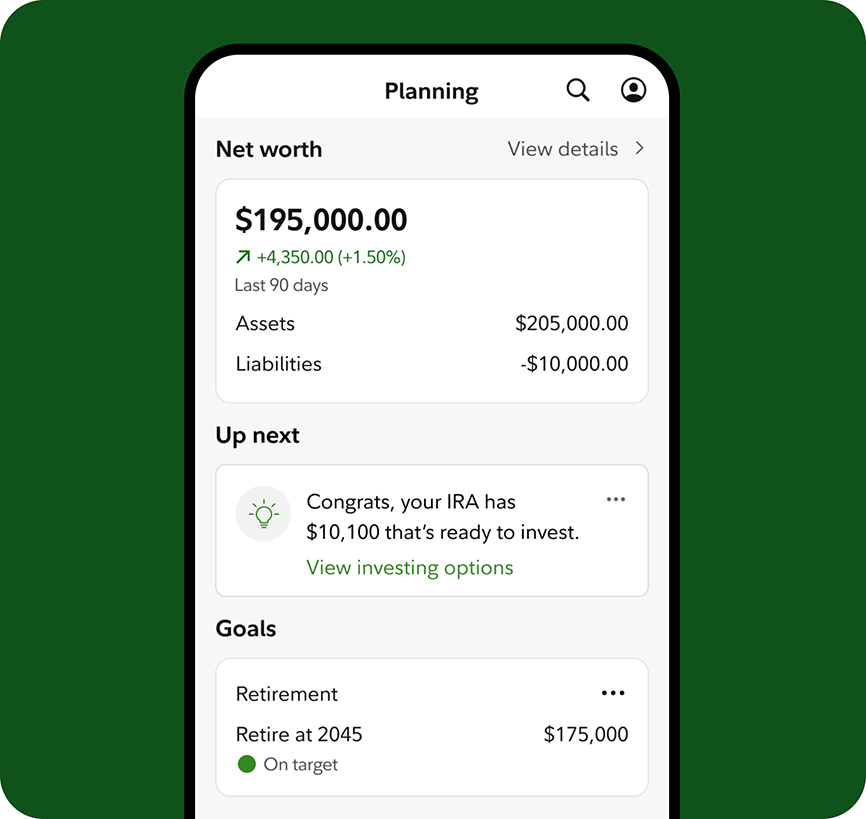Prepare for tomorrow. Even as priorities change today.

Create a free personalized plan1
Set your goals and path to getting there—and make changes as your life evolves.

Track your progress
Know where you stand and get suggested next steps for long and short-term goals.

Get help when you need it
Connect with Fidelity’s financial pros to answer your retirement planning questions.
Get clear answers
Our financial professionals are here for you 24/7 to help answer questions as you save for retirement.

Call
Speak with our financial professionals at 1-800-343-3548
Accounts to help with your retirement savings
You have retirement goals; we've got the solutions to help you achieve them. And to open most retirement accounts, there are no account fees or minimums.2
ROTH IRA
Save tax-free with access to your contributions
Once you contribute to your Roth, potential growth within the account is tax-free. Contributions you add to your account may be withdrawn at any time, penalty-free.
TRADITIONAL IRA
Save for tomorrow and potentially reduce taxable income today
Reduce your taxable income by deducting your contributions, if eligible, and your potential earnings grow tax-deferred.3
ROLLOVER IRA
Combine your accounts and focus on growth in one place
If you are looking to move your old 401(k) and workplace accounts into one IRA, you can do so without taxes or penalties.4
Retirement savings resources
Fidelity tips for retirement savings
For investors of all experience levels, read about Fidelity strategies to help you build retirement savings.
Find out which IRA is right for you
Answer a few questions and we'll show you the accounts and amounts that are possible for you.




